By Katie Deets

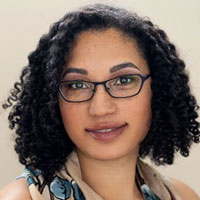 Samantha Lewis will be joining the Division of Cell & Developmental Biology as an Assistant Professor in January 2020. Lewis is no stranger to the UC system—she completed her PhD in Bradley Hyman’s lab at UC Riverside and went on to do her postdoctoral work at UC Davis with Jodi Nunnari.
Samantha Lewis will be joining the Division of Cell & Developmental Biology as an Assistant Professor in January 2020. Lewis is no stranger to the UC system—she completed her PhD in Bradley Hyman’s lab at UC Riverside and went on to do her postdoctoral work at UC Davis with Jodi Nunnari.
Now on her way to Berkeley, Lewis said she is impressed by the vibrancy of the intellectual community in the department, as well as the culture of support she senses among the faculty. She is also encouraged by how responsive the faculty and staff seem to be to the needs of their students and postdocs. “I have already witnessed a lot of interest and momentum building around supporting trainee mental health, as well as diversity, equity, and inclusion efforts — which are important to me,” says Lewis.
For her research, Lewis focuses on mitochondrial DNA, the non-nuclear DNA that is responsible for coding many of the genes involved in cellular metabolism. She is particularly interested in the knowledge that nuclear DNA and mitochondrial DNA are not strictly co-inherited, despite the fact that both are necessary for the existence of aerobic, or oxygen-needing, life.
“The goal of my lab is to reveal the cellular mechanisms that ensure mitochondrial DNA integrity and inheritance in metazoans using quantitative imaging, genetics, and systems biology approaches,” says Lewis. “I think this [goal] is important because in the past, research has focused very heavily on nuclear genome integrity, while mitochondrial genome regulation has received far less attention.” Aberrations in mitochondrial DNA can lead to various metabolic or neurological diseases, so it is imperative for scientists to have foundational knowledge of this small yet crucial genome.
Lewis’ first priority in 2020 is to establish a positive, supportive culture in her new lab: “I think it’s very important to lay that groundwork.” Then, she plans to start unraveling the mysteries behind what some still refer to as “the neglected genome.”
To learn more about the Lewis lab, visit their website at https://www.thelewislab.org

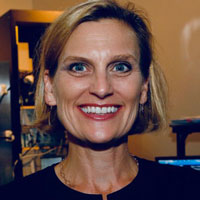 As one of three new faculty members in the Division of Cell & Developmental Biology, Professor Ellen Lumpkin has come to Berkeley from Columbia University, where she has been an Associate Professor of Somatosensory Biology and of Physiology and Cellular Biophysics for the last nine years. Lumpkin's work thus far has focused on understanding the cellular and molecular mechanisms behind touch and pain sensation in mammals. She has a particular interest in the mechanosensing Merkel cells, found just under the top layer of skin, and her work has helped uncover how these cells receive and transmit information about the fine details of objects.
As one of three new faculty members in the Division of Cell & Developmental Biology, Professor Ellen Lumpkin has come to Berkeley from Columbia University, where she has been an Associate Professor of Somatosensory Biology and of Physiology and Cellular Biophysics for the last nine years. Lumpkin's work thus far has focused on understanding the cellular and molecular mechanisms behind touch and pain sensation in mammals. She has a particular interest in the mechanosensing Merkel cells, found just under the top layer of skin, and her work has helped uncover how these cells receive and transmit information about the fine details of objects.
When asked about her move to Berkeley, Lumpkin notes that she has spent her entire scientific career working on medical campuses and is eager to transition to a research environment that focuses on more fundamental biological questions. Her lab will dive into a new basic biology project aimed at understanding the evolutionary origins of mechanosensation by studying Ctenophores, an ancestral marine invertebrate. Ctenophores, also known as comb jellies, are particularly exciting to work with because much of their existence, specifically eating and swimming, relies on ciliated mechanosensing cells.
Lumpkin is also excited about the opportunity to teach undergraduate courses and become involved in the diverse campus community. She is proud to be a first generation college student and hopes to serve as a mentor and role model for other first-generation students at Berkeley.
Lumpkin will be forming a joint lab with current MCB Associate Professor Diana Bautista, who studies the molecular mechanisms behind itch, touch, and pain.

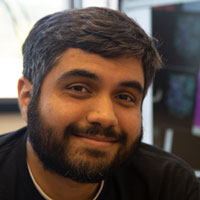 Srigokul “Gokul” Upadhyayula joined the Division of Cell & Developmental Biology this year as the Scientific Director of the newly formed Advanced Bioimaging Center (ABC) and a Chan Zuckerberg Initiative Imaging Scientist. Gokul, who received his PhD from UC Riverside, has returned to California after completing his postdoctoral work with Tom Kirchhausen at Harvard Medical School and working as a visiting scholar in the lab of Eric Betzig at the Janelia Research Campus.
Srigokul “Gokul” Upadhyayula joined the Division of Cell & Developmental Biology this year as the Scientific Director of the newly formed Advanced Bioimaging Center (ABC) and a Chan Zuckerberg Initiative Imaging Scientist. Gokul, who received his PhD from UC Riverside, has returned to California after completing his postdoctoral work with Tom Kirchhausen at Harvard Medical School and working as a visiting scholar in the lab of Eric Betzig at the Janelia Research Campus.
Gokul’s interest in microscopy began with a side project to his graduate work, when he built a reflectance interference contrast microscope. This particular type of microscope allows scientists to use polarized light to image single molecule interactions. From his work, Gokul says he “got obsessed with trying to observe, study, and quantify the behavior of single molecules.”
As director of the ABC, Gokul’s initial focus is getting the facility up and running. He is currently working on hiring a team of talented scientists, helping build the instrumentation, and setting up the infrastructure needed to collect, manage, and process the tera- and petabytes of imaging data that will be mined from each project. Once off the ground, the ABC will provide instrumentation and data processing capabilities that are truly at the cutting edge of microscopy.
Gokul has a great vision for the future of the ABC: “I am convinced UC Berkeley will be ground zero for the next generation of imaging that will enable new discoveries.”

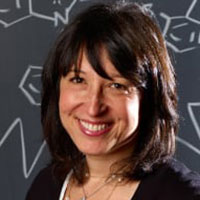 The Division of Biochemistry, Biophysics, and Structural Biology welcomed Professor Alanna Schepartz this past summer. Schepartz has also joined the Department of Chemistry as the T. Z. and Irmgard Chu Distinguished Chair. She comes to Berkeley after serving as the Sterling Professor of Chemistry and Professor of Molecular, Cellular, and Developmental Biology at Yale University.
The Division of Biochemistry, Biophysics, and Structural Biology welcomed Professor Alanna Schepartz this past summer. Schepartz has also joined the Department of Chemistry as the T. Z. and Irmgard Chu Distinguished Chair. She comes to Berkeley after serving as the Sterling Professor of Chemistry and Professor of Molecular, Cellular, and Developmental Biology at Yale University.
Schepartz received numerous awards during her 30 years at Yale—including being elected into the National Academy of Sciences in 2014—and her work has contributed significantly to multiple avenues of research at the chemistry-biology interface. Now, she is excited to bring her lab across the country and join the vibrant, spirited Berkeley community.
Schepartz explains that her Berkeley lab will continue to work on “four very different areas of chemical and synthetic biology.” These areas range from designing new small molecule probes and super-resolution dyes, to studying how proteins store information through changes in their tertiary structure. Her lab will also continue its ongoing collaboration with Jamie Cate, Berkeley Professor of Chemistry and Molecular & Cell Biology. That work, according to Schepartz, focuses on creating “new classes of molecules that we call sequence-defined chemical polymers, which can be anything from a heat- and protease-resistant therapeutic antibody to a Nylon-Kevlar space-age co-polymer fabric.”
The variety of work within the lab provides a great training environment, according to Schepartz. “That diversity benefits our research primarily through the students, who gain enormous perspective and knowledge by working shoulder-to-shoulder with others whose fundamental expertise is very different,” she says.
Though she’s only been here a few months, Schepartz is already finding the inspiration she hoped for when deciding to pull up her roots and move to Berkeley. “I can’t wait for my group to arrive in December to experience the same magic,” she exclaims.

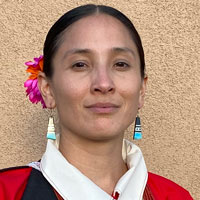 In January 2020, the Division of Neurobiology will welcome Assistant Professor Andrea Gomez. Gomez is the furthest-traveling of MCB’s newest faculty members, as she comes from the lab of Peter Scheiffele at the University of Basel in Switzerland.
In January 2020, the Division of Neurobiology will welcome Assistant Professor Andrea Gomez. Gomez is the furthest-traveling of MCB’s newest faculty members, as she comes from the lab of Peter Scheiffele at the University of Basel in Switzerland.
As a postdoc in the Scheiffele lab, Gomez’s work focused on molecular codes and their role in signaling between neurons in the central nervous system of mice. These codes come from a phenomenon known as alternative splicing, or the ability of one gene to provide the directions for multiple, different proteins through various combinations of the RNA. As Gomez says, “alternative splicing can expand the coding power of the genome.”
Gomez has been able to apply some of these molecular coding principles to neuronal connectivity and synaptic signaling but was left wondering, “how robust is this code from mice to humans? How is the code manifested when you change the number of neurons by an order of magnitude [between species]?” She is now interested in many aspects of RNA regulation and what constraints exist when applying this regulation to neuronal function.
The Gomez lab will begin to address these topics by looking at neuronal cell type-specific alternative splicing. “Not only will we look at the cellular rules at the RNA level,” she says,” but [also] how mechanisms at the RNA level enable [neural] circuits to integrate information.” An understanding of these mechanisms will help Gomez and others learn more about the complex signalling events that occur within the mammalian nervous system.
Many Berkeley MCB labs regularly collaborate and bridge multiple areas of biological research both within and outside the department, and Gomez feels her new lab will be right at home: “I consider my work to be at the interface of RNA biology and neuronal integration [and] I believe my lab [will] fit well — and perhaps it [will] stand out for the same reason.”
In addition to the collaborative research environment, Gomez is also excited to be a part of the diverse campus community. “Not only do I get the opportunity to be surrounded by clever, creative young minds and brilliant and supportive peers,” she says, “but I can continue to learn and grow as my queer, nerdy-self.”

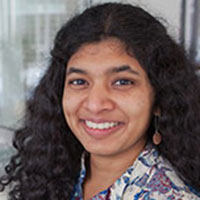 Assistant Professor of Genetics, Genomics, and Developmental Biology Dipti Nayak has come to MCB with a new—yet incredibly ancient—organism: methanogenic archaea.
Assistant Professor of Genetics, Genomics, and Developmental Biology Dipti Nayak has come to MCB with a new—yet incredibly ancient—organism: methanogenic archaea.
Nayak’s scientific career began with an interest in environmental engineering and the use of microbes for bioremediation. However, while completing a Masters degree at Stanford University, she became drawn to microbial metabolism and went on to earn a PhD in Organismic and Evolutionary Biology with Christopher Marx at Harvard. Nayak’s specific interest in methane-producing archaea took shape during her postdoctoral work at the University of Illinois with William Metcalf, where she studied the basic biology of these ecologically significant organisms. “Along the way...I realized how little we know about them despite how important they are,” says Nayak.
To help herself and others learn more about this ancient life form, which releases significant amounts of methane, a potent greenhouse gas, Nayak established a CRISPR/Cas-9 genome editing system in methanogenic archaea. Use of CRISPR/Cas-9 was an exciting first for the archaea world. She now plans to use this tool in her new lab to explore the many unanswered questions about methanogenic archaea and their roles in everything from the human microbiome to the global climate. “To some extent, I feel like a kid in a candy store,” she admits. “There are so many cool research questions [to] choose from now that we have CRISPR genetics!”
Nayak is thrilled to be starting her lab here at Berkeley. “The breadth of research in the biological sciences happening on this campus, in MCB and beyond, is unparalleled,” she says. She is excited to work with our “amazing graduate students,” and, of course, “Berkeley is such a great place to live!”
To learn more about the Nayak lab, visit https://mcb.berkeley.edu/faculty/ggd/nayakd

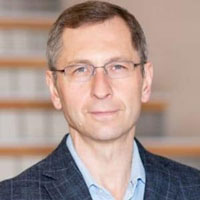 MCB welcomed Fyodor Urnov back to the Berkeley community this summer as Professor of Genetics, Genomics, and Development and as Scientific Director of Technology and Translation at the Innovative Genomics Institute (IGI). Urnov previously worked as an Adjunct Professor at UC Berkeley — while also working as Sangamo BioSciences — from 2001 until 2017, when he took on the position of Deputy Director at the Altius Institute for Biomedical Sciences in Seattle, Washington.
MCB welcomed Fyodor Urnov back to the Berkeley community this summer as Professor of Genetics, Genomics, and Development and as Scientific Director of Technology and Translation at the Innovative Genomics Institute (IGI). Urnov previously worked as an Adjunct Professor at UC Berkeley — while also working as Sangamo BioSciences — from 2001 until 2017, when he took on the position of Deputy Director at the Altius Institute for Biomedical Sciences in Seattle, Washington.
Urnov has been studying DNA since he was a graduate student under the guidance of Susan Gerbi at Brown University. Much of his career has focused on genome editing using various nucleases, which are enzymes that can cut DNA or RNA. Nucleases like the Cas9 protein of CRISPR/Cas-9 are an invaluable tool in genomic editing, as they can be targeted to highly specific regions in the DNA of many different groups of organisms.
Urnov has a clear passion for his work and is known for giving extraordinarily engaging lectures and seminars. “He is a gifted lecturer in all contexts, combining clarity with great erudition, all leavened with an infectious dose of humor,” says Professor Jasper Rine, who worked with Urnov while Urnov was an adjunct faculty member. He is also very active on Twitter (@UrnovFyodor), which he uses to share articles and ideas about the future of gene editing — and his love for the Beatles.
As a director at the IGI, Urnov will be leading a team of scientists toward the development of CRISPR-based treatments for diseases, such as radiation sickness, sickle cell disease, and various nervous system disorders. He is also interested in learning more about the fundamental mechanisms behind CRISPR/Cas-9 activity in various mammalian systems, including primary human cells.
Back to Main Fall 2019 Newsletter Page
| Connect With Us! | ||||
MCB Twitter |
 MCB Facebook |

LinkedIn |
 Cal Alumni Network |
 Give to MCB |
